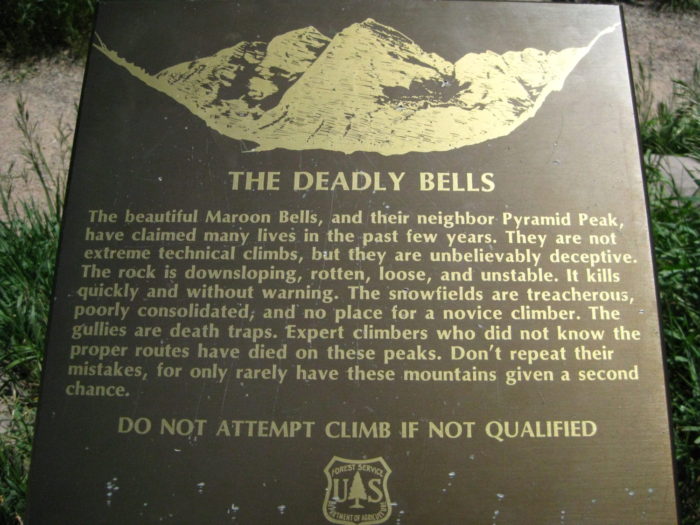
When it comes to survival and avoiding costly and dangerous summer rescues, Mountain Rescue Aspen (MRA) believes education and preparation before leaving home is the key to safety for summer climbers. That was its message at a recent discussion panel held by the MRA in the mountain community of Pitken County. MRA is a volunteer organization that performs alpine rescues in the Elks mountain range, including the recovery of bodies of people who died on the mountain.
The MRA patrols the popular but deadly mountain known as Capital peak in Colorado, which is considered the deadliest fourteenther mountain (14,000+ above sea level) in the area . This year, five climbers have died on Capital Peak, and nine have died since 2000. The “Deadly Bells” peak nearby is considered Colorado’s second deadliest fourteenther; it has already claimed two lives this year.
In an attempt to bring members of Pitkin County community together, the MRA hosted a panel to discuss the dangers of heading into the back-country unprepared and uneducated. The panel was attended by locals of the area, including noted Aspen skier, Sam Coffey, and members of the MRA, including MRA Board President, Jeffrey Edelson.
Aspen Skier, Sam Coffey, was reported saying, “As these guys touched on pretty hard, preparation is key…” During the panel discussion, many ideas were discussed, including a controversial signage issue, and whether the signs should be increased to educate on site hikers and climbers. This signage issue has been the subject of much debate over the past few years.
The basis of the controversy is whether the signs are effective. Jeffrey Edelson of the MRA told the audience, “In general, a lot of folks have their mind made up by the time they hit those signs.” (meaning most hikers have already decided a route prior to seeing the on site signs). Also, as Edelson points out, in many cases the signs are being stolen as souvenirs of the hike, especially in the popular “Deadly Bells” area.
The MRA reports that half of the rescues responded to are people who were ill prepared and lacked the skills to navigate the trail. That’s why the MRA feels that educating people before they leave the house is the best way to reach the public and save lives. As Edelson put it, “So what we are really trying to focus on is getting information to folks before they leave the house, because we feel that’s when we can really affect decision making.”
The MRA sited three “rookie or newbie” themes as common causes that put climbers in danger on a hike: not following the standard route, starting too late in the day, and separating from companions. The MRA feels that the panel discussions are effective in educating the public of these common perils; it also heightens the awareness of the hiking community in general.
Social Media is another way to educate people, but unfortunately, it also has it consequences. It helps increase peoples awareness of the back-country, but it brings more people to these places that don’t have the hiking skills to handle the routes. You can watch any mountaineering route on YouTube, but that doesn’t mean the knowledge will translate on the mountain in a heavy storm.
Five people have died on Capital Peak in 2017. Jake Parker (25) fell nearly 300 feet; Jeremy Parker (35) fell before reaching the Knife Edge; Carlon Brightwell (27) and Ryan Marcil (26) died at the base after climbing the mountain; Male unknown (21) fell 600 feel after taking a shortcut on descent. In total, 8 people have died on Colorado’s fouteenther mountains in 2017 this summer.
For decades, MRA has focused on educating people in the back-country on winter safety and avalanches to save lives during the winter months. Now, for the first time, they are using the lessons learned during the winter months to focus on safety for summer back-country hikers. Since there has been great successes during the winter, they’re hoping to duplicate the strategy to save lives in the summer months.
But whether it’s summer or winter, the primary goal of the MRA is to save lives. And according to MRA, as presented in the panel discussion, the best ways to increase safety and save hikers lives is to reach them in the planning stages at home, before they reach the mountain.
